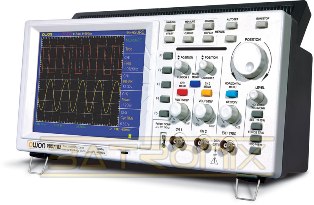Digital Oscilloscope: An overview of the main features
 The 21st century is the time of scientific and technical progress, the time of the transformation of an industrial society into a post-industrial one. Modern production technologies involve the use of all kinds of electronic equipment, which leads to the availability of a variety of all kinds of tools. It is difficult to overestimate the role of measuring devices in the technological chain of any production, one of the main functions of which is to signal the parameters of the ongoing technological processes.
The 21st century is the time of scientific and technical progress, the time of the transformation of an industrial society into a post-industrial one. Modern production technologies involve the use of all kinds of electronic equipment, which leads to the availability of a variety of all kinds of tools. It is difficult to overestimate the role of measuring devices in the technological chain of any production, one of the main functions of which is to signal the parameters of the ongoing technological processes.
The oscilloscope is one of the most common measuring and measuring instruments, its widespread use began in 1947 in scientific research and production as an analog instrument using an electron beam tube. Since 1980, a new era in the development of oscilloscopes began - a digital oscilloscope, which has a number of advantages over the traditional analog oscilloscope, although a number of modern improvements significantly improve their operation.
The digital oscilloscope, compared to its predecessor, has more options, one of which is storage, i.e. the received information is displayed on the screen and stored in the form of files. The cybernetic scheme of a digital oscilloscope is as follows: input divider — normalizing amplifier — analog-to-digital converter — memory unit — control device — display device (usually a liquid crystal panel).
The digital technology of operation allows the use of a digital oscilloscope, in various modes of operation, which the control device allows to be installed. The color display allows you to mark the signals of different channels in color, and the color labels make it much easier to analyze the incoming information. Using the menu, you can get any additional information and perform manipulations (selection, saving, scaling, synchronization, stretching signals in time or amplitude). Modern digital oscilloscopes are compatible with the operation of a computer, which allows you to save the information displayed on the screen with the results of research in the computer's memory or output them directly to a printer.

